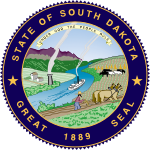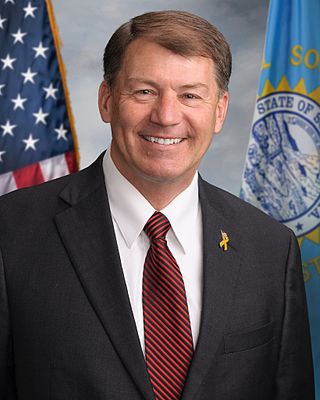
Marion Michael Rounds is an American businessman and politician serving as the junior United States senator from South Dakota since 2015. A member of the Republican Party, he served as the 31st governor of South Dakota from 2003 to 2011.
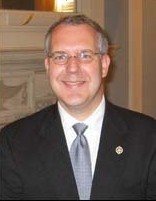
The 2006 Oklahoma gubernatorial election was held on November 7, 2006. Incumbent Democratic Governor Brad Henry won re-election to a second term in a landslide, defeating Republican U.S. Representative Ernest Istook. Henry took 66.5% of the vote to Istook's 33.5% and swept all but three counties in the state.

The 2006 Arkansas gubernatorial election took place on Tuesday, November 7, 2006. Incumbent Republican Governor Mike Huckabee was barred from seeking candidacy due to term limits set by the State Constitution in 1998, stating that the Governor may only serve two terms in their lifetime. Democratic State Attorney General Mike Beebe, defeated Republican former U.S. Representative Asa Hutchinson by a wide margin. This was the first open seat election since 1978. Hutchinson later won the governorship in 2014 when Beebe was term limited.

The 2006 Idaho gubernatorial election was held on November 7, 2006. Incumbent Governor Jim Risch succeeded Dirk Kempthorne, who resigned May 26 to become Secretary of the Interior. Risch served as governor until the end of the term, but had committed to a reelection campaign for Lieutenant Governor before Kempthorne's appointment and subsequent resignation.

The 2006 South Carolina gubernatorial election took place on November 7, 2006. Incumbent Republican Governor Mark Sanford won re-election against Democratic State Senator Tommy Moore, becoming only the third Republican governor in South Carolina to win a second term. Sanford started the campaign with a double-digit edge over Moore and he maintained that lead to election day. During the campaign, Sanford's approval rating averaged in the mid-fifties. In Sanford's re-election victory, he also garnered 22% of the African American vote.

The 2006 Wyoming gubernatorial election took place on November 7, 2006. Incumbent Democratic Governor Dave Freudenthal won re-election in a landslide over Republican Ray Hunkins, becoming the first Democrat since 1910 to win every county in the state. To date this was the last time a Democrat was elected to statewide office in Wyoming, the last time a Democrat carried every county in the state, the last gubernatorial election in which a Democrat received more than 30% of the vote, the last statewide election in which a Democrat received more than 45% of the vote, and the last statewide election in which a Democrat won any county besides Teton, Albany, Laramie, or Sweetwater. As of 2024, Ray Hunkins is the last Republican gubernatorial nominee who was never elected Governor of Wyoming. This is the last time that Wyoming voted for and elected a Senate candidate and a gubernatorial candidate of different political parties.

The 2008 United States Senate election in South Dakota was held on November 4, 2008. Primary elections were held on June 3, 2008. Incumbent Senator Tim Johnson won re-election to a third term. As of 2024, this election alongside the simultaneous House race is the last time a Democrat won a statewide election in South Dakota. This is the last time that a Senate candidate and a presidential candidate of different political parties simultaneously won South Dakota.

The 2008 North Dakota gubernatorial election took place on 4 November 2008 for the post of Governor of North Dakota. Incumbent Republican Governor John Hoeven was easily reelected again, defeating Democratic-NPL challenger Tim Mathern. The primaries took place on June 10, 2008. John Hoeven outperformed John McCain, the Republican presidential nominee, by about 21%. McCain defeated Democratic nominee Barack Obama 53%-45% in the concurrent presidential election.

The 2010 South Dakota gubernatorial election was held on November 2, 2010 to elect the Governor of South Dakota to a four-year term. Incumbent Republican Governor Mike Rounds was ineligible to run for re-election due to term limits.
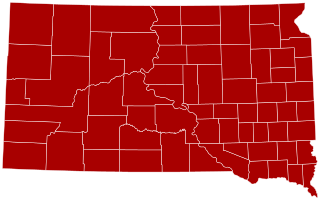
The 2010 United States Senate election in South Dakota was held on November 2, 2010 along other elections to the United States Senate in other states as well as elections to the United States House of Representatives and various state and local elections. Incumbent Republican Senator John Thune won re-election to a second term unopposed.

The 2012 North Dakota gubernatorial election was held on November 6, 2012 to elect a Governor and Lieutenant Governor of North Dakota, concurrently with the 2012 U.S. presidential election, as well as elections to the United States Senate, elections to the United States House of Representatives and various state and local elections. Incumbent Governor Jack Dalrymple succeeded to the office when then-Governor John Hoeven resigned to take a seat in the U.S. Senate in 2010. Dalrymple, a member of the Republican Party, won election to a full term. Ryan Taylor was the Democratic nominee. Dalrymple prevailed with 63% of the vote; he declined to seek re-election in 2016.
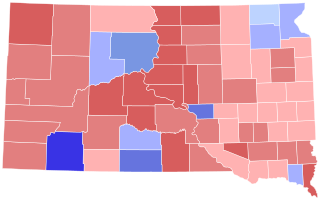
The 2014 United States Senate election in South Dakota took place on November 4, 2014, to elect a member of the United States Senate to represent the state of South Dakota, concurrently with the election of the Governor of South Dakota, as well as other elections to the United States Senate in other states and elections to the United States House of Representatives and various state and local elections.

The 2014 South Dakota gubernatorial election took place on November 4, 2014, to elect the Governor and Lieutenant Governor of South Dakota, concurrently with the election of South Dakota's Class II U.S. Senate seat, as well as other elections to the United States Senate in other states and elections to the United States House of Representatives and various state and local elections.
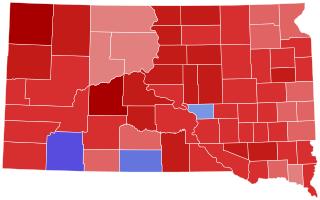
The 2016 United States Senate election in South Dakota was held November 8, 2016, to elect a member of the United States Senate to represent the State of South Dakota, concurrently with the 2016 U.S. presidential election, as well as other elections to the United States Senate in other states and elections to the United States House of Representatives and various state and local elections. The primaries were held June 7.

The 2016 North Dakota gubernatorial election was held on November 8, 2016, to elect the Governor and Lieutenant Governor of North Dakota, concurrently with the 2016 U.S. presidential election, as well as elections to the United States Senate, elections to the United States House of Representatives and various state and local elections. This would have been the first time North Dakotans selected a governor under new voter ID requirements, in which a student ID was insufficient identification to vote, but a court ruling in August 2016 struck the down the provision; the election was held under the 2013 rules.

The 2018 South Dakota gubernatorial election took place on November 6, 2018, to elect the next governor of South Dakota. Incumbent Republican governor Dennis Daugaard was term-limited and could not seek a third consecutive term.
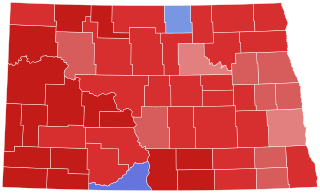
The 2020 North Dakota gubernatorial election was held on November 3, 2020, to elect the Governor and Lieutenant Governor of North Dakota, concurrently with other federal and statewide elections, including the U.S. presidential election. Incumbent Republican Governor Doug Burgum and Lieutenant Governor Brent Sanford were both re-elected to a second term.

The 2018 South Dakota elections were held on November 6, 2018. All of South Dakota's executive officers were up for election as well as South Dakota's at-large seat in the United States House of Representatives.

The 2022 Wyoming gubernatorial election took place on November 8, 2022, to elect the governor of Wyoming. Incumbent Republican Governor Mark Gordon won a second term against Democratic Wyoming State Facilities Commission member Theresa Livingston. Livingston's vote percentage was the lowest for a Democratic candidate running for governor in Wyoming since it was admitted to the union in 1890, falling short of Leslie Petersen's 22.90% performance in 2010. Gordon won by the widest margin in the state's history, winning by 58.3 points and becoming the first Republican to win every county since 2010.

The 2022 South Dakota gubernatorial election took place on November 8, 2022, electing the governor of South Dakota. Incumbent Republican governor Kristi Noem defeated Democratic nominee Jamie Smith to win a second term.

